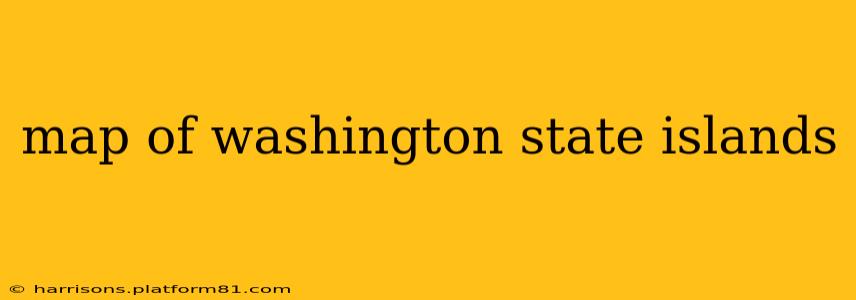Washington State boasts a stunning archipelago, a collection of islands that dot the Puget Sound and extend out to the Strait of Juan de Fuca. From the iconic San Juan Islands to the smaller, less-visited gems, these islands offer diverse landscapes, rich history, and abundant wildlife. This guide will help you navigate the waters and explore the fascinating world of Washington's islands. We'll delve into the geography, highlight key islands, and answer some frequently asked questions about this breathtaking region.
What are the main island groups in Washington State?
Washington State's islands are primarily clustered into several distinct groups:
-
San Juan Islands: Arguably the most famous, this archipelago is located in the northern Puget Sound, near the border with Canada. They are renowned for their dramatic scenery, orca whale watching opportunities, and charming towns like Friday Harbor and Roche Harbor.
-
Puget Sound Islands: This broader group encompasses numerous islands within Puget Sound itself, ranging in size from large islands like Bainbridge Island and Whidbey Island to smaller, less-developed ones. These islands offer a diverse range of experiences, from bustling ferry terminals to quiet, secluded beaches.
-
Straits Islands: Found in the Strait of Juan de Fuca, these islands lie closer to the Pacific Ocean and generally experience more dramatic weather. They often feature rugged coastlines and a more wild, untamed character.
-
Gulf Islands (partially in Washington): While many of the Gulf Islands are located in British Columbia, Canada, some smaller islands are situated close enough to Washington State to be considered part of the broader regional archipelago.
Which is the largest island in Washington State?
Whidbey Island is the largest island in Washington State. It's a significant part of Puget Sound, and offers a mix of natural beauty, charming towns, and military history (Naval Air Station Whidbey Island).
What is the most popular island in Washington State?
While popularity can fluctuate, the San Juan Islands as a whole are arguably the most popular destination. Their accessibility, stunning scenery, and abundance of wildlife draw significant tourism. Within the San Juan Islands, Orcas Island and Lopez Island are often cited as favorites for their unique characteristics.
How many islands are there in Washington State?
Pinpointing the exact number of islands in Washington State is challenging. The definition of an "island" can vary (some are very small, some are connected at low tide), and the official count fluctuates. However, the state boasts hundreds, if not thousands, of islands of varying sizes.
What are some of the best islands to visit in Washington State for whale watching?
The San Juan Islands are a prime destination for whale watching, particularly orca whales (killer whales). Many tour operators offer whale watching excursions from various island locations within the archipelago. Orcas Island and San Juan Island are popular choices.
Are there any islands in Washington State that are privately owned?
Yes, many islands in Washington State are privately owned. Access to these islands is generally restricted unless you are a guest of the landowner.
What's the best way to get to the islands of Washington State?
The primary mode of transportation to many Washington State islands is by ferry. Washington State Ferries operates a comprehensive system connecting various islands to the mainland and to each other. Private boats are another option, but require navigational skills and appropriate licensing.
Exploring Further: A Deeper Dive into Washington's Island Ecology and History
Beyond the logistical information, Washington State's islands offer rich ecosystems and compelling historical narratives. From the indigenous cultures that have inhabited these islands for millennia to the early settlers and the ongoing preservation efforts, the story of these islands is one of resilience, adaptation, and breathtaking natural beauty. Further research into the specific islands you're interested in will uncover even more fascinating details. Consider exploring resources from the Washington State Parks and Recreation Commission, the local chambers of commerce of the islands, and even local historical societies to learn more about the specific island's unique history and ecology.
